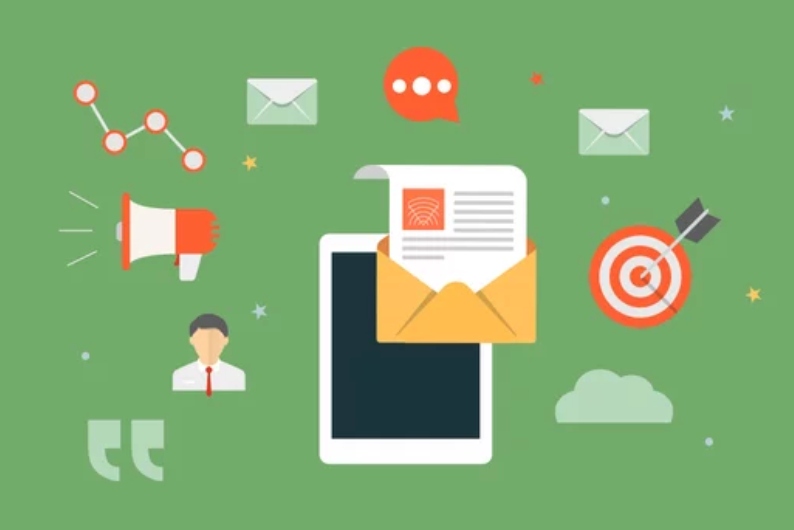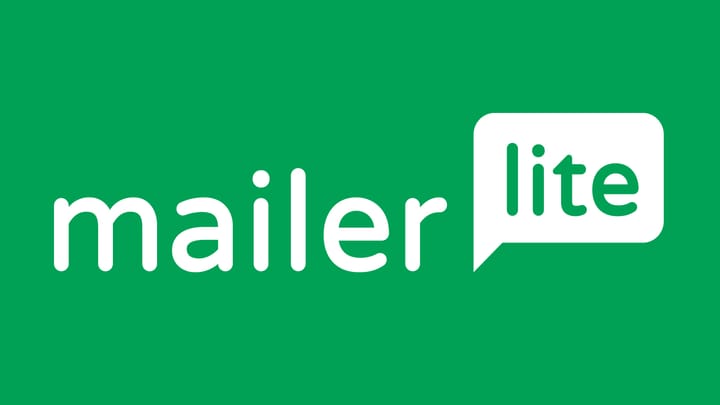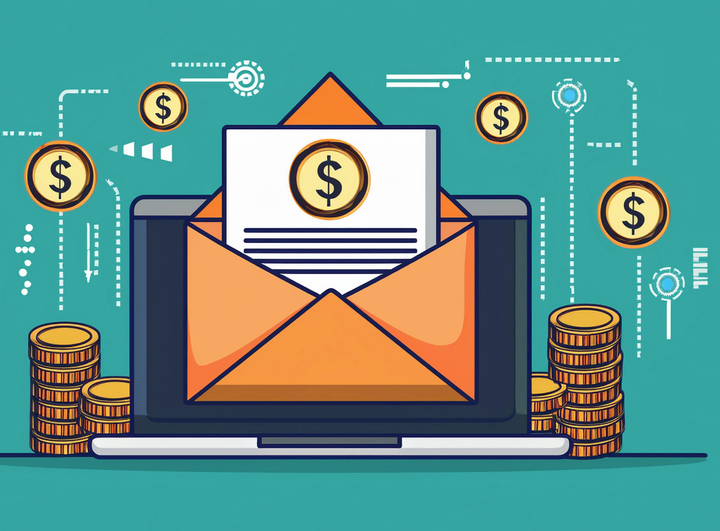Mastering Email Marketing Metrics: 8 Key Metrics to Help You Reach Your Goals
Email marketing is a crucial tool for brands to connect with customers, especially in the face of changing consumer behavior and longer sales cycles. To stay competitive, brands must focus on retention metrics and post-purchase communication.

Email marketing remains a powerful tool for brands aiming to connect with their customers. It has become as a strategic channel for acquisition and retention.
Aside from those, it has been reported that there have been some recent shifts in consumer behavior have led to longer sales cycles, with consumers veering away from impulse buying.
This change has compelled Direct-to-Consumer (DTC) brands to shift their focus towards retention metrics, investing heavily in post-purchase communication to nurture long-term relationships with their customers.
Understanding this kind of change underscores the importance of solid email marketing analytics in shaping and guiding marketing strategies-— and extracting email marketing metrics to monitor and measure offers clear lens through which businesses can evaluate their efforts.
This make enterprises make informed decisions, and adapt their tactics for better engagement and ultimately, improved return on investment.
In this article, we'll look into the eight crucial email marketing metrics to harness the full potential of email campaigns for any enterprises.
Click Rate
Click rate, a critical metric in email marketing, measures the percentage of recipients who clicked on one or more links contained in an email. This metric is a great indicator of the level of engagement and interest that your content generates.
Unlike open rates, which only tell you how many people opened the email, click rates provide deeper insights into how effective your email content is in encouraging recipients to take action.
A high click rate indicates that your message resonates well with your audience, encourages interaction, and drives traffic to your landing pages, making it a critical measure of campaign engagement and effectiveness.
But, how do you calculate click rate?
How to Calculate Click Rate
To calculate the click rate, divide the number of unique clicks by the number of emails delivered, then multiply by 100 to get a percentage. The formula looks like this:
(number of unique click rates/numbers of email delivered)x100
This calculation gives you a clear view of how many of your delivered emails are compelling enough to prompt an action.
Tips for Enhancing Click Rate
- Craft Compelling Subject Lines and Preheaders: These elements should work together to pique curiosity or offer value, prompting recipients to open your email.
- Segment Your Audience: Tailor your content to suit the preferences and behaviors of different audience segments to increase relevance and engagement.
- Use Clear and Compelling Calls to Action (CTAs): Ensure your CTAs are visible, persuasive, and convey a sense of urgency or benefit.
- Optimize Your Email Design: Use a responsive design that looks good on all devices and includes attractive, easy-to-click buttons for your links.
- Test and Refine: Regularly A/B test different elements of your emails (e.g., subject lines, CTA wording, layout) to see what works best and continue refining your strategy.
Conversion Rate
Conversion rate is your metric in evaluating the effectiveness of email marketing campaigns, essentially measuring the percentage of recipients who take a desired action after clicking on a link within the email.
This action could be anything from making a purchase, signing up for a webinar, downloading a white paper, or any other goal defined by the marketer.
How to Calculate Conversion Rate
To calculate the email conversion rate, apply the following formula:
Total conversions/Total email deliveries x 100
This calculation helps marketers assess the actual impact of their email campaigns on achieving business objectives, allowing for targeted strategies to enhance performance further.
Understanding and optimising the conversion rate can significantly impact marketing outcomes by increasing the ROI of email marketing efforts.
Ways to Boost Conversions from Email Campaigns
- Create Personalised Content: Tailoring your email content to meet the interests and needs of your audience can significantly improve engagement and, by extension, conversions.
- Optimise for Mobile: With a substantial percentage of emails being opened on mobile devices, ensuring your email design is mobile-friendly is crucial.
- Include a Clear and Enticing Offer: Make your value proposition clear and irresistible to encourage recipients to take the desired action.
- Use Urgency Wisely: Implementing a sense of urgency in your emails can motivate recipients to act immediately. However, it should be used sparingly and authentically to maintain trust.

Active on Site
Click rates are a good way to start measuring engagement, but "active on site" gives you a much more detailed picture of how interested people are in your products and how likely they are to buy them.
This metric should be regarded as one of the important factor in analysing how much time your visitor spend on your website, which product pages or landing pages they usually look through, and items they leave in their carts.
By using this metric, you can gain insights into where people are spending the most time on your website.
This information is invaluable as it allows you to segment email recipients based on their interests and level of engagement, thereby significantly improving your "active on site" rate.
To enhance this metric further, consider:
- Segmenting your lists: Tailor your communication based on the visitor's behavior and interactions with your website.
This customisation makes sure that the content is useful, which makes it more likely that it will interest them and keep them interested better.
- Creating interactive content: You may need to integrate quizzes, polls, and games into your games.
These features not only keep users entertained and interested, but they also let you collect useful information about their likes and dislikes and how they behave, which makes it easier to tailor your messages to each person.
- Improving your website experience: A seamless, user-friendly website interface encourages longer visits and deeper engagement. Evaluate your website's design, navigation and content regularly.

Revenue per Recipient (RPR)
When determining how much money each email recipient contributes to your marketing efforts, revenue per recipient (RPR) emerges as a crucial metric.
Understanding RPR is crucial for gauging the effectiveness of your email marketing strategy, as it highlights not just the financial gains from each recipient, but also the efficacy of your list segmentation.
To calculate this metric, divide the overall revenue from an email campaign by the overall number of successfully delivered emails.
Total revenue from an email campaign/ Total number of successfully delivered emails
But how much value does a single email recipient bring to your table?
RPR takes the mystery out of this by giving you a clear picture of how much money each email recipient brings in for your business. Like a litmus test for how well your email marketing strategy is working, it shows you exactly how well your list segmentation is working.
To optimise your email revenue per recipient, it's imperative to refine your segmentation strategy meticulously. Leveraging both zero- and first-party data plays a significant role in this process. By segmenting your lists based on distinct categories:
- previous purchasers'
- VIP customers who exhibit high spending behaviors
- frequent website browsers
- holiday shoppers
- cart abandoners
- event attendees
- and those inclined towards discounts
This strategic segmentation ensures that your marketing messages resonate deeply with each recipient, thereby maximising revenue opportunities.
Unsubscribe Rate Insights
It is important to know your unsubscribe rate because it tells you directly how engaged and happy your audience is with your email content.
A higher-than-average rate of unsubscribes could mean that your readers are not interested in what you are writing or that you are sending too many emails. When looked at correctly, this is an important metric that can help you make the changes to your email strategy that will increase overall engagement.
To keep this rate at a minimum, focusing on the quality and relevance of your content, as well as optimising sending times, are crucial steps.
Tailoring emails to meet the interests and needs of your segments can drastically reduce the likelihood of subscribers opting out.
Moreover, implementing a preference centre allows subscribers to choose how often they wish to be contacted, thereby giving them control over the communication and reducing the chances of unsubscribing significantly.
Email Deliverability Rates
Your deliverability rate is a critical metric in email marketing, indicating the percentage of emails that successfully land in your recipients' inboxes.
In spite of what most people think, not all emails that are sent get to where they are supposed to.
Some emails bounce back due to various reasons, landing either as hard bounces or soft bounces.
- Hard bounces occur when the email cannot be delivered because the recipient's email address is incorrect, non-existent, or deemed spam.
- Soft bounces, on the other hand, are temporary delivery failures, such as when an inbox is full.
To calculate your email deliverability rate, divide the number of emails delivered to inboxes by the total number of emails sent, then multiply by 100.
Email Deliverability Rate = (Total Number of Emails Sent Number of Emails Delivered to Inboxes )×100
Enhancing email deliverability involves several strategies, such as
- Maintaining a clean email list
- Ensuring SPF and DKIM records are in place, and
- Avoiding triggering spam filters with your content.
These measures can significantly improve the likelihood of your emails reaching their intended targets.
List Growth Rate
List growth rate is an essential measurement in email marketing, gauging the speed at which new subscribers join your email list.
While it's tempting to focus solely on the numbers, the true value of an increasing list lies in its concurrently high engagement levels.
To determine your list growth rate, subtract the number of unsubscribers from the total number of new subscribers over a specific period, then divide this net increase by the initial total number of list members. Multiply the result by 100 to get your growth rate in percentage:
List Growth Rate (%) = ( Net Increase in Subscribers/ Initial Total Number of List Members )×100
How to Improve List Growth Rate
Improving your list growth rate isn't just about adding more subscribers; it's about attracting the right ones. Consider implementing the following strategies:
- Pair a sign-up form with a discount: Offering a discount or a special offer as an incentive for signing up can motivate potential subscribers to join your list.
- Partner with another brand: Collaborate with a brand that complements yours to cross-promote each other's newsletters. This can attract a new audience likely to be interested in your products or services.
- Use referrals: Give your current subscribers rewards or discounts if they get their friends or family to sign up too. This method not only grows your list, but it also gets new subscribers. Because they were recommended by a friend, they are likely to be very engaged with your content.
Also it is better to note that keeping your list "clean" ensures that your engagement rates remain high and your deliverability is not compromised. Regularly review your list to remove inactive subscribers, correct erroneous emails, and update information as necessary.
This ongoing maintenance is crucial for preserving the overall health of your email marketing efforts and ensuring they yield the best possible return.
Return on Investment (ROI)
Your return on investment (ROI) encapsulates the financial gains from your email marketing endeavours relative to the investments made.
It's essential to consider all the associated costs to accurately gauge your programme's efficiency.
These costs often include:
- Expenditures on marketing and email automation platforms
- Compensation for team members like writers, designers, data analytics specialists, and marketing operations specialists
- Expenses related to third-party vendors tasked with list cleaning, strategy formulation, A/B testing, and delivery management.
- Investments in advertising aimed at boosting sign-ups should be factored into the total cost
To calculate your email marketing ROI, start by subtracting the total costs from the revenue generated exclusively through your email channel. Afterwards, divide this result by the total cost and multiply by 100.
Email Marketing ROI (%) = (Revenue Generated - Total Costs ) x 100
This calculation yields your ROI as a percentage, offering a clear view of the financial return on your email marketing investments.
Improving ROI
While email marketing is a cost-effective and efficient means of reaching and engaging with your audience, there are ways to further improve your ROI. These include continuously:
- Optimising your subject lines and email content for higher open and click-through rates,
- Segmenting your list for more targeted campaigns,
- Personalising emails based on user behaviour and preferences, and
- Utilising automation to streamline your processes. Additionally,
- Regularly tracking and analyzing your email performance metrics can help you identify areas for improvement and make data-driven decisions to increase ROI.
Wrap Up
The most important aspect of reporting on email performance metrics is picking a consistent cadence, whether it is bi-weekly, monthly, or quarterly.
Keep an eye on these metrics to find out what parts of your email marketing strategy are working and what parts need to be changed.
By doing so, you're not just collecting data, but actively using it to enhance the effectiveness of your campaigns and drive better results.



